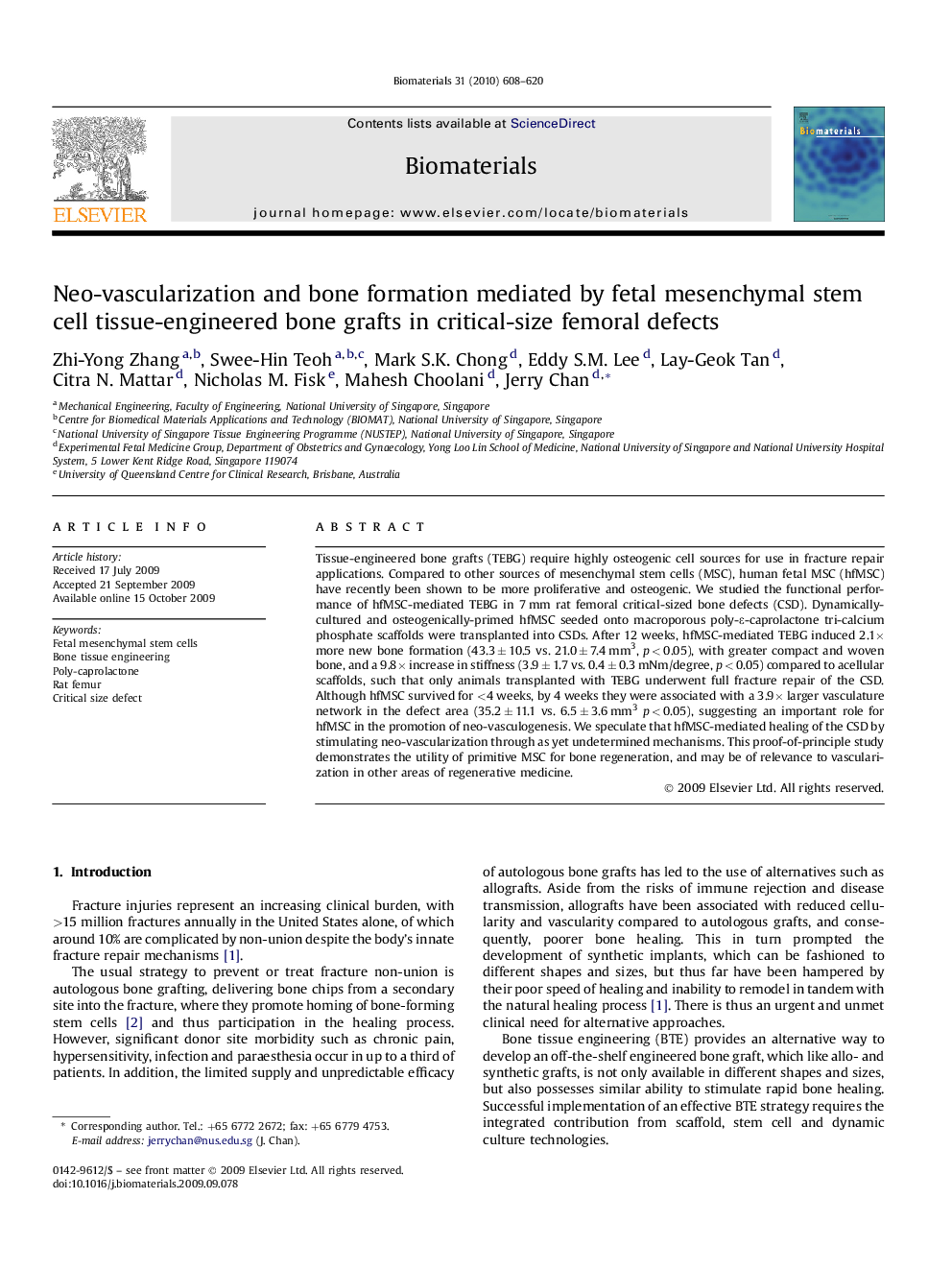| Article ID | Journal | Published Year | Pages | File Type |
|---|---|---|---|---|
| 9476 | Biomaterials | 2010 | 13 Pages |
Tissue-engineered bone grafts (TEBG) require highly osteogenic cell sources for use in fracture repair applications. Compared to other sources of mesenchymal stem cells (MSC), human fetal MSC (hfMSC) have recently been shown to be more proliferative and osteogenic. We studied the functional performance of hfMSC-mediated TEBG in 7 mm rat femoral critical-sized bone defects (CSD). Dynamically-cultured and osteogenically-primed hfMSC seeded onto macroporous poly-ɛ-caprolactone tri-calcium phosphate scaffolds were transplanted into CSDs. After 12 weeks, hfMSC-mediated TEBG induced 2.1× more new bone formation (43.3 ± 10.5 vs. 21.0 ± 7.4 mm3, p < 0.05), with greater compact and woven bone, and a 9.8× increase in stiffness (3.9 ± 1.7 vs. 0.4 ± 0.3 mNm/degree, p < 0.05) compared to acellular scaffolds, such that only animals transplanted with TEBG underwent full fracture repair of the CSD. Although hfMSC survived for <4 weeks, by 4 weeks they were associated with a 3.9× larger vasculature network in the defect area (35.2 ± 11.1 vs. 6.5 ± 3.6 mm3p < 0.05), suggesting an important role for hfMSC in the promotion of neo-vasculogenesis. We speculate that hfMSC-mediated healing of the CSD by stimulating neo-vascularization through as yet undetermined mechanisms. This proof-of-principle study demonstrates the utility of primitive MSC for bone regeneration, and may be of relevance to vascularization in other areas of regenerative medicine.
